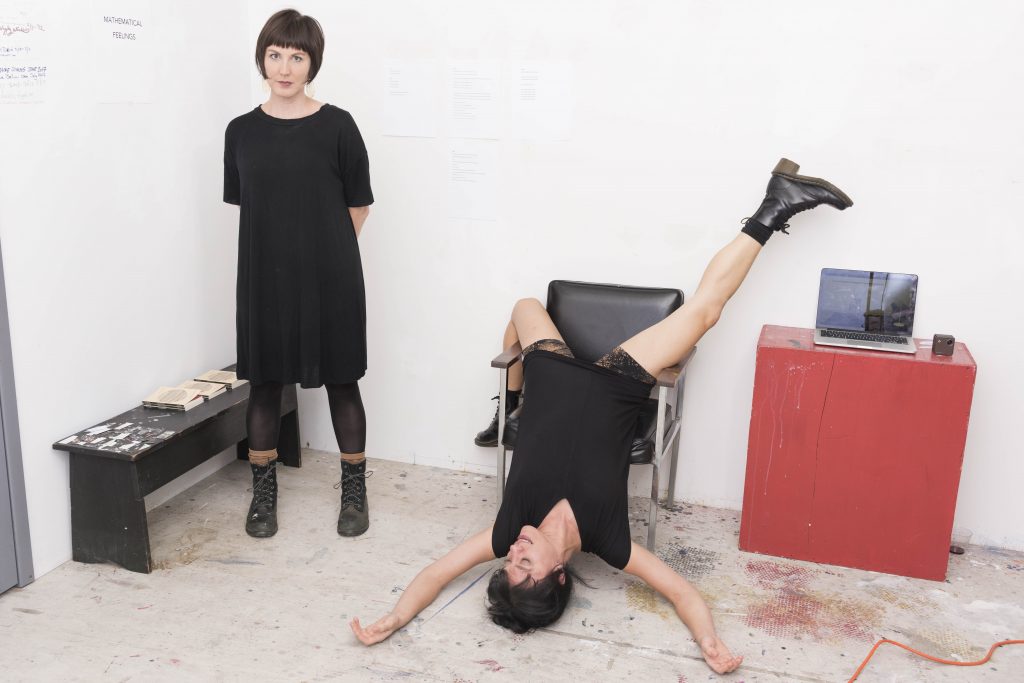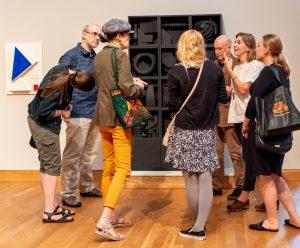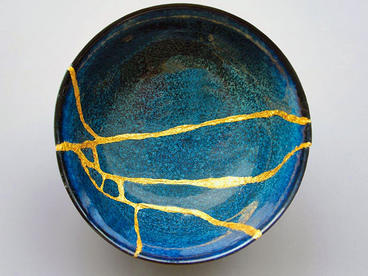ACT×4
When artist Marina Abramović famously declared The Artist Is Present, the immediate follow-up question that could be asked is: “present to what end?” Can we think of a physical presence of an artist in a gallery as having a goal? Presence is an action: performance is the most affordable form of making, the most direct form of engagement with space, surroundings, and society. And the first thing to do is to dispel the expectation that the term “performance” has a definite meaning. This spring in the Target Studio, performance will have four meanings. The gallery will turn into a research space where four investigations will simultaneously unfold and develop diverse performative actions, all to a particular end—establishing collaborative relationships with people and with place.
Aniccha Arts works with splits of a second—the immediate and sudden reactions of our bodies to destabilizing physical environments. When a person stands in a room with moving walls, usually the body involuntarily sways backward and forward in the direction of the wall’s movement. But when this is experienced repeatedly, people develop resilience and learn to resist this impulse. Pramila is interested in how bodies succumb, and then overcome, the initial reaction. What choreography can be created from such movements? Aniccha Arts team: Maxwell Hoaglund (sculptor), Sam Johnson (movement collaborator), Valerie Oliviero (movement collaborator), Lela Pierce (movement collaborator), Chitra Vairavan (movement collaborator), Pramila Vasudevan (lead artist, choreographer).
Radio Rhizome
Nooshin Hakim Javadi and Pedram Baldari will create a mobile radio station acting as a platform for connecting with researchers of immigration, mobility, and trauma. The University's Center for New Americans in the Law School and the Target Studio serve as their bases. They will develop a program of broadcasts—interviews, storytelling, and sound performances—and establish a discursive program of engagement with academic and immigrant communities. Javadi and Baldari will use the radio transmission as a tool and as a metaphor, envisioning a flexible yet resistant and mobile rhizome-like engagement that extends well beyond the museum walls. This project is supported by a grant from Stardust.
bs :
Rachel Jendrzejewski and Terry Hempfling establish conversations and hack the routine of conversations at the same time. They exchange and layer movement and speech; break spoken word and make new demands of it; and engage in physical endurance and multitasking exercises with people and environments. Potential collaborators from diverse academic disciplines (communication, psychology, neuroscience, linguistics, and philosophy) will take part in those conversations, while Terry and Rachel challenge relationships to meaning making—their own and their interlocutors’.
The Feminist Strip Club
Monica Sheets challenges the popular sentiments toward strip club entertainers that veer between puritanical schadenfreude to glamorization. The issues that entertainers face — job insecurity, harassment, and wage theft — are regularly the subject of journalism, yet entertainers' experiences are rarely included in the discourse. Monica will work with strip club entertainers and academic partners from law, sociology, and public affairs to establish a discussion and performance workshop at the Target Studio, using it to trigger long-term research addressing the changing value and structure of labor in our society, while also destigmatizing work in the erotic dance industry. This project is supported by a grant from Stardust.
Learn more about WAM's Target Studio for Creative Collaboration and its Incubator Residencies.



